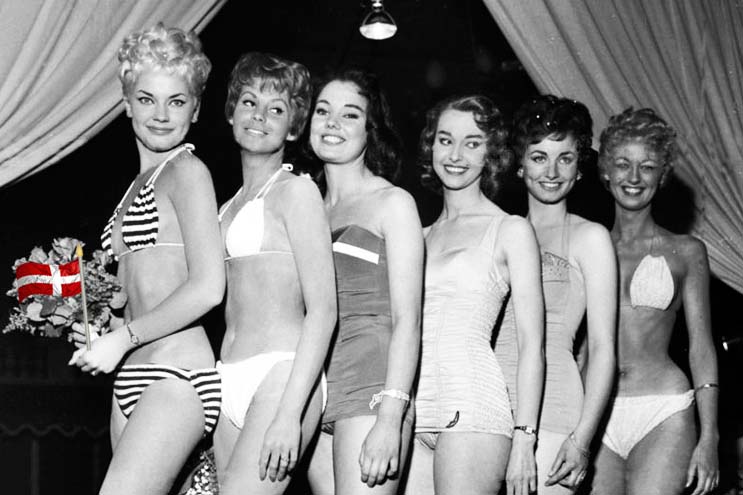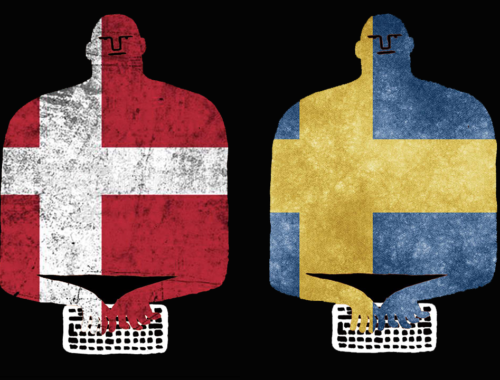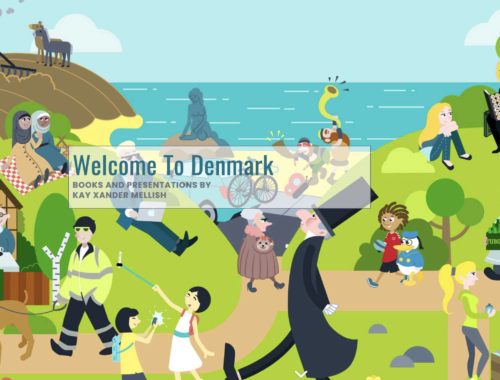I get a little local newspaper in my mailbox every week, and this week – in between the usual stories about which local project has been able to squeeze the biggest subsidy out of the Copenhagen city government – there was an article about the Miss Denmark pageant.
Two teenagers from the neighborhood, one an ethnic Dane and one of Middle Eastern descent, had been selected to represent us in the pageant.
Now that surprised me. I’ve lived here for 15 years, and I’d ever even heard of the Miss Denmark pageant. Denmark is usually not the sort of place where women in bathing suits walk around while fully-dressed men debate their merits.
And quite frankly, most Danes are less interested in the beauty of people than the beauty of things.
Danes and Beauty and the Architect-Drawn House
If you really want to get a Dane all hot and bothered, start talking about some thing that is beautifully designed.
I do translations sometimes, from Danish to English, and recently I had to figure out how to translate the expression “arkitekttegnet hus” – literally, architect-drawn house.
Of course, all houses bigger than a mud hut are designed by some sort of architect, but that’s not what the expression means.
An architect-designed house, from the Danish point of view, has modern, flowing lines, an open arrangement of rooms, and great big windows to let in light during the long Danish winter – and, inadvertently, let thieves see all the designer furniture inside.
A house like that celebrates the hand of the designer, makes the designer visible, makes you look at the design and comment on it. That, to a Dane, is beauty.
The beauty of the practical
In Denmark, beauty is usually found in something practical that has been very well designed. Housewares, particularly kitchenwares, are a Danish design favorite.
They don’t have to be from expensive materials, but they have to be simple, streamlined, and work flawlessly. The beauty is in the usefulness.
Danes also love unfussy furniture, durable fabrics with bright patterns, and soft rugs that are easy to clean.
A little high-design personal touch in a home is required too. I’ve seen bright copper coat hangers, crystal candle holders, wooden monkeys. The nirvana is goods of extremely high quality, with maybe a slight twist of humor.
Interestingly, the Danes’ passion for world-class home decor does not always extend to what’s hanging on the wall. It’s quite common to see a Danish interior with some of the world’s finest and most expensive housewares set off by amateur paintings done by the lady who lives there, or her adult daughter, or somebody’s deceased great aunt.
Beauty as expressed in the fine arts, like classical painting and sculpture, is less of a passion in Denmark.
The place to take your secret lover
The Vikings were not really oil painters, so the first real Danish oils were from about 200 years ago. They mostly depict young farmers and their love lives, and you can still check them out at the kind of museum that’s popular with the over 60 crowd.
Modern art is much more popular in Denmark, particularly the contemporary interactive museums. Aarhus has a great rooftop rainbow you can walk through and see the city below in all different colors. Lots of families with kids there.
Less popular are museums of classical sculpture, like the Thorvaldsen Museum in downtown Copenhagen. Thorvaldsen was a Dane to went to Rome to learn to sculpt like an Italian, so the Thorvaldsen Museum is filled white marble shaped like strong muscled warriors and soft-breasted naked nymphs in the Greek and Roman style.
Here’s a tip: If you ever want to have an affair in Denmark, meet your sweetheart at the Thorvaldsen Museum. You and your secret lover will have the place to yourself. You might meet a couple Italian or Spanish tourists, but you won’t meet anyone from Denmark.
Classical art celebrating the beauty of the bodily perfection is just not very Danish.
Don’t expect compliments
Now, Danes are OK with nudity, as long as it’s ordinary, lumpy human nudity. But the idea of any human being an ideal doesn’t fit well with their passion for equality, which suggests that no one person should be better than anyone else.
It’s why you will rarely receive compliments of any sort in Denmark, and particularly not compliments on your looks.
Partly, that’s because Danish men are very timid about possibly making a woman uncomfortable by praising her, uh, structure.
Partly because the Danish language does a poor job of describing beauty. Words like flot, smuk, pæn, køn, yndig, fin, and lækker don’t have a lot of romantic flow to them.
And its partly because physical beauty is something you’re given, instead of having worked for, which makes it less valuable in Danish eyes.
But there’s also a little bit of the Jantelov there, a little “how dare you be better looking than me?” To compliment someone’s appearance might be to puff her up too much, make her think she’s better than the others.
A few years ago I wore a new and very expensive dress to a party, and while I had a good time, I was kind of miffed that no one mentioned my outfit. I said this to a Danish friend a couple of days later and she confirmed that yes, she had noticed the dress, which she thought was beautifully made. But nobody said anything about it at the party, I said.
“Why would we do that?” she said. “You already knew you looked good.”
Buy Kay’s books about Denmark on Amazon, Saxo, Google Books, Apple Books, Barnes & Noble Nook, or via our webshop.
Image mashup copyright Kay Xander Mellish 2025





